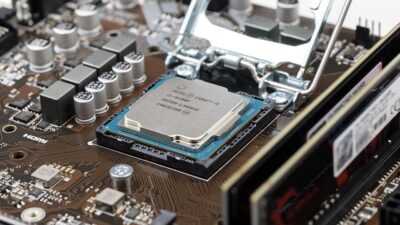As the gaming industry continues to evolve at a breakneck pace, one of the most transformative technologies emerging in recent years is ray tracing. This rendering technique allows for more realistic lighting, shadows, and reflections, fundamentally altering how games are visualized. With the introduction of AMD’s Radeon graphics cards designed to support ray tracing, gamers are left wondering what the future holds. In this article, we will explore the advancements in ray tracing technology with Radeon, the expectations for upcoming titles, and what this means for gamers in the near future.
Understanding Ray Tracing
Ray tracing simulates the way light interacts with objects in a virtual environment. Unlike traditional rasterization, which approximates lighting effects to improve performance, ray tracing calculates light paths in a more realistic way. This method creates lifelike effects such as reflections, refractions, and global illumination, resulting in stunning visuals that bring game worlds to life.
AMD’s Entry into Ray Tracing
AMD made its foray into ray tracing with the release of the Radeon RX 6000 series. These GPUs are equipped with hardware-accelerated ray tracing capabilities, combining AMD’s RDNA 2 architecture with the latest performance technologies. This marked a significant leap from previous generations, making ray tracing accessible to a larger audience of gamers who may have previously relied on competitors’ offerings.
Key Features of AMD’s Ray Tracing Technology
-
Hybrid Rendering: AMD’s approach to ray tracing is hybrid, meaning it integrates both traditional rasterization and ray tracing to optimize performance. This allows games to maintain high frame rates while still delivering beautifully rendered scenes.
-
FidelityFX Super Resolution (FSR): Alongside ray tracing, AMD’s FSR technology enhances performance by upscaling lower resolution images to improve frame rates without a substantial loss in quality. FSR 2.0, the latest iteration, offers substantial gains, especially in conjunction with ray-traced visuals.
- Smart Acceleration: AMD GPUs utilize smart acceleration techniques to efficiently manage workloads. This means even on hardware that’s less powerful, games can still perform gracefully, benefiting from the improved visuals without excessive demands on system resources.
What Gamers Can Expect
1. Enhanced Visual Fidelity
As more game developers begin to leverage AMD’s ray tracing capabilities, players can expect a marked increase in visual fidelity. Upcoming titles are likely to showcase features like dynamic shadows, realistic reflections, and lifelike ambient occlusion, creating immersive environments that draw players deeper into the game.
2. Broader Support for Ray Tracing
With major game engines such as Unreal Engine and Unity integrating support for ray tracing, more games are set to utilize this technology. AMD’s collaboration with developers ensures that popular titles will tap into ray tracing features, providing gamers with enhanced experiences in their favorite franchises.
3. Performance Optimization
Thanks to continuous advancements in hardware and software, future Radeon GPUs are expected to offer even better performance with ray tracing. As AMD releases new iterations of their graphics cards, gamers can look forward to higher frame rates, lower power consumption, and more efficient processing of ray-traced visuals.
4. VR and Beyond
The future of ray tracing also extends into virtual reality (VR) and augmented reality (AR) gaming. As the industry’s focus on immersive experiences grows, Radeon’s ray tracing capabilities are set to play a crucial role in powering VR titles, offering unparalleled realism and depth in digital worlds.
5. A Competitive Edge in Esports
For competitive gamers, the performance optimization of ray tracing could mean the difference between victory and defeat. As esports continues to gain popularity, Radeon’s commitment to maintaining high frame rates while delivering stunning visuals may become an essential factor for players aiming for the top.
Conclusion
The future of ray tracing with Radeon is undeniably exciting. As AMD pushes the boundaries of graphics technology, gamers can expect more immersive and visually stunning experiences than ever before. With enhancements in performance, broader game support, and the technology’s expansion into VR, the next generation of gaming promises to be more realistic and engaging.
As the industry continues to innovate, Radeon’s commitment to integrating ray tracing reflects a broader trend towards realism in gaming. For gamers looking to elevate their experience, keeping an eye on these developments will be crucial in anticipating what the future holds. With each leap in technology, the boundary between gaming and reality becomes increasingly blurred, and the journey is just beginning.

